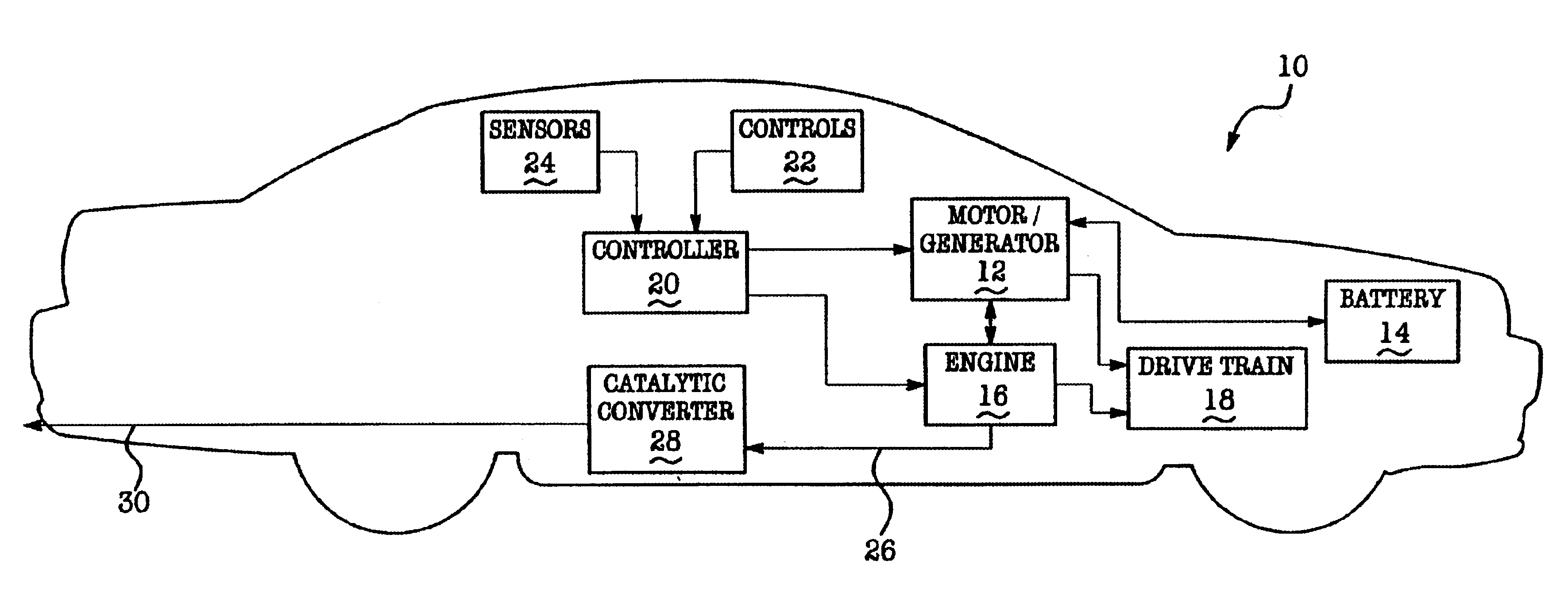Method of operating a hybrid electric vehicle to reduce emissions
a hybrid electric vehicle and electric vehicle technology, applied in hybrid vehicles, electrical control, exhaust treatment, etc., can solve the problems of reducing the time during which the catalytic converter is least efficient, poor efficiency of the catalytic converter, and prior efforts have suffered from some drawbacks, so as to reduce the power output of the internal combustion engine, reduce emissions, and reduce emissions.
- Summary
- Abstract
- Description
- Claims
- Application Information
AI Technical Summary
Benefits of technology
Problems solved by technology
Method used
Image
Examples
Embodiment Construction
Referring now to FIG. 1, there is shown an automotive hybrid electric vehicle (“HEV”) 10 which utilizes a method or strategy for reducing emissions which is performed in accordance with the teachings of the preferred embodiment of the present invention. Vehicle 10 includes an electric machine or motor / generator 12, which is operatively coupled to a conventional electrical energy storage device 14 (e.g., a battery, fuel cell or other electrical energy storage device), and an internal combustion engine 16. Motor / generator 12 and engine 16 are each selectively and operatively coupled to the vehicle's driveline or drive train 18 (e.g., to the drive shaft(s) of the vehicle) and cooperatively deliver power and torque to the drive train 18, thereby powering the vehicle 10. A control system or controller 20 is electrically and communicatively coupled to motor 12, engine 16, conventional user or driver operated controls or components 22, and conventional vehicle operating condition sensors 2...
PUM
 Login to View More
Login to View More Abstract
Description
Claims
Application Information
 Login to View More
Login to View More - R&D
- Intellectual Property
- Life Sciences
- Materials
- Tech Scout
- Unparalleled Data Quality
- Higher Quality Content
- 60% Fewer Hallucinations
Browse by: Latest US Patents, China's latest patents, Technical Efficacy Thesaurus, Application Domain, Technology Topic, Popular Technical Reports.
© 2025 PatSnap. All rights reserved.Legal|Privacy policy|Modern Slavery Act Transparency Statement|Sitemap|About US| Contact US: help@patsnap.com



